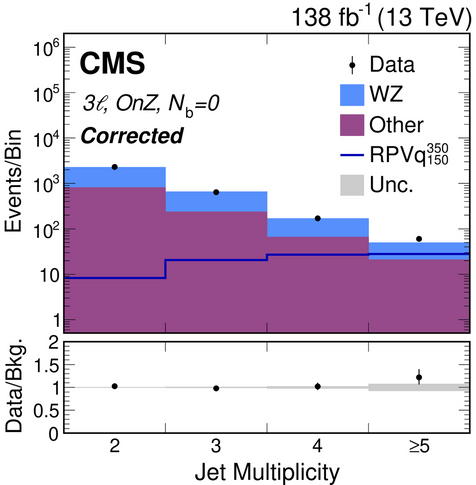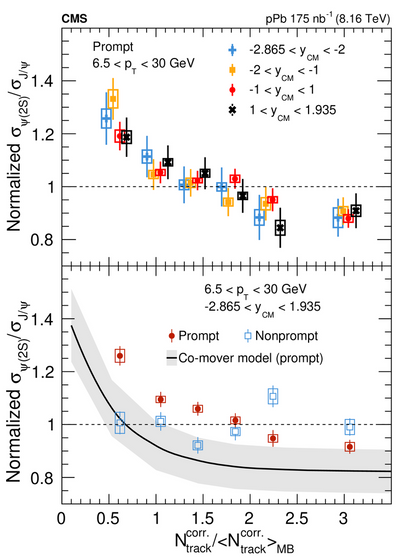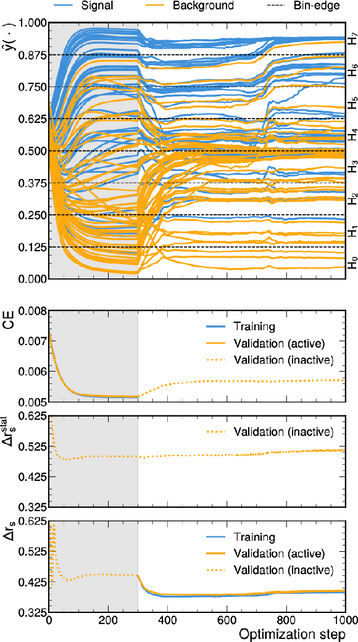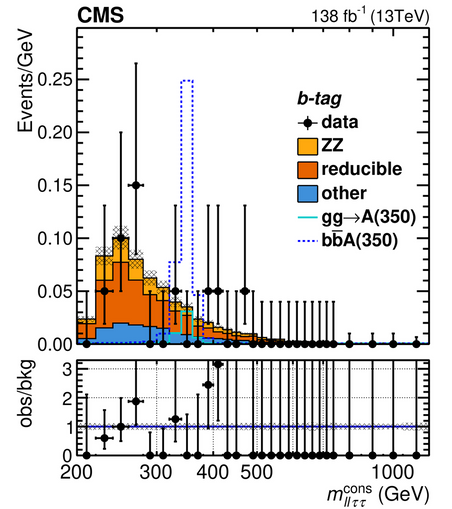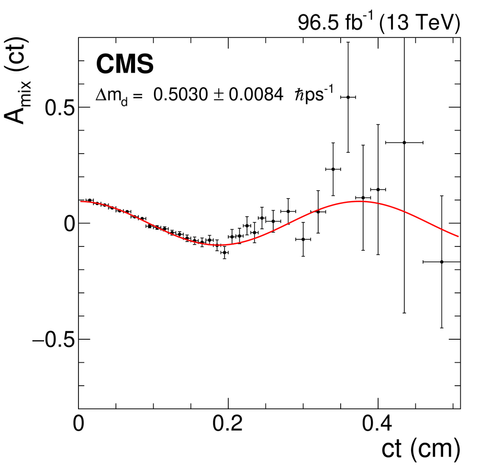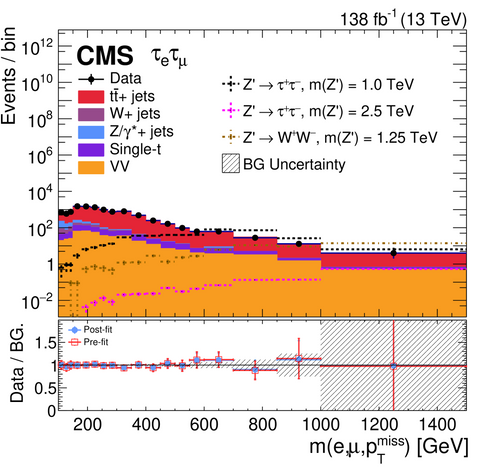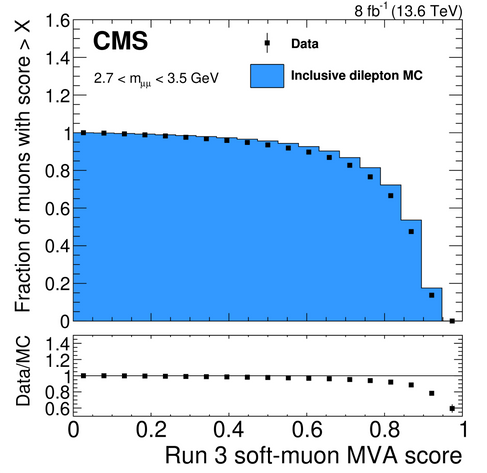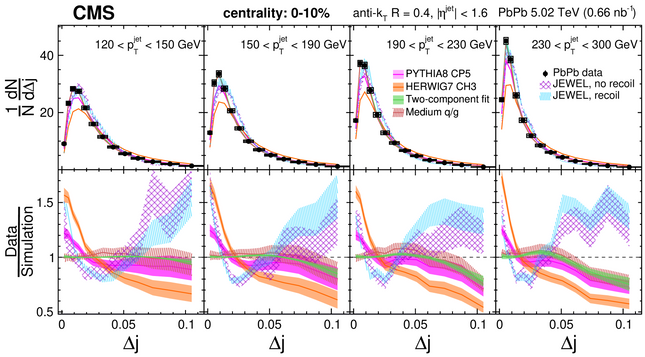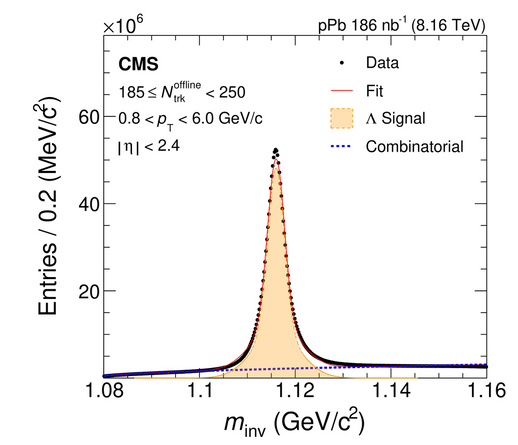Understanding the Higgs boson's interaction with lighter particles is essential for verifying its role in providing mass and validating our models. Studying a Higgs boson with a charm quark helps measure this interaction. #CMSPaper 1387 shows our sensitivity is >200 times less than what the standard model requires. Nevertheless, current results from the LHC exceed initial expectations. The little peak in the fit is from other Higgs backgrounds, not siginal, btw https://arxiv.org/abs/2503.08797
Recent searches
Search options
#CMSPaper
#CMSpaper 1386 looks for deviations in extra quark/gluon jet production in lepton-rich collisions, which should decline by a power law. The study analyzes Z boson collisions, with an extra lepton from a W boson and up to 5+ extra jets. Data aligns with expectations with at worst ~15% uncertainties. We use this result to constrain R-parity violating supersymmetry predictions https://arxiv.org/abs/2503.06726
At hadron colliders, we spend a lot of time throwing away any uninteresting collisions. But it is crucial to know how many collisions happened altogether (we call this the "integrated luminosity", so how bright our collider was over time). This #CMSPaper 1385 describes how we measure the total number of collisions accurately for lead-proton collision runs, with precision between 3% and 1.6% depending on the year. https://arxiv.org/abs/2503.03946
Comparing particle production in busy vs not-so-busy events is key to the CMS heavy ion program. Typically, these studies compare particles with different quarks to observe their behavior in busy events. #CMSPaper 1384 innovatively compares particles with the same quarks, showing that they behave differently depending on travel distance, a behavior theory struggles to calculate accurately https://arxiv.org/abs/2503.02139
When we analyse the data at the LHC, we regularly use neural networks and similar supervised #machinelearning tools to separate signal from background. This #CMSPaper 1383 shows the first time the neural network is also systematic uncertainty-aware on a real LHC analysis! https://arxiv.org/abs/2502.13047
#CMSPaper 1375 looks for extra Higgs bosons decaying to the Higgs boson we know already plus an extra Z boson. It uses the tau signature, together with two muons or electrons. This result is still very statistics-dominated as it is difficult to do with the data we have now https://arxiv.org/abs/2501.14825
The study of CP violation, or the difference in behaviour between composite matter and antimatter particles, is a very active field of study of the LHC. #CMSPaper 1374 studies CP oscillation (check that sinus!) in the B meson decay in signatures with two muons and two kaons https://arxiv.org/abs/2412.19952
#CMSPaper 1373 looks for new heavy Z bosons. That kind of Z' bosons would exist in many extensions of the standard model that aim for grand unification (= also include gravity in some way). It is a null result https://arxiv.org/abs/2412.19261
CMS stands for compact MUON solenoid, and #CMSPaper 1372 describes how we use #machinelearning to better identify one of the more difficult kinds of muons (those that have very low speed, or low momentum as we say ) https://arxiv.org/abs/2412.17590
#CMSPaper 1382 measures the structure of jets, sprays of particles created by quarks and gluons, in lead-lead collisions to understand how jets are formed and how they interact with other particles in collisions. This paper measures this in previously unmeasured regimes https://arxiv.org/abs/2502.13020
#CMSPaper 1381 measures the behaviour of the Λ (anti)particle (= up, down, and strange quark) in proton-lead collisions, specifically how much they are dragged along by the rest of the collision. We presently cannot describe the spin of particles in these collisions. https://arxiv.org/abs/2502.07898
#CMSPaper 1379 looks for hypothetical extra Higgs bosons in events with four b quark jets. As you may see from this very smooth fallling distribution, we did not see any. That helps us know which new physics predictions are inconsistent with Nature https://arxiv.org/abs/2502.06568
#CMSPaper 1378 looks for the Higgs boson together with a photon. Studying those collisions is a great way to indirectly measure the interaction of the Higgs boson with lighter quarks than the charm quark (which we can't do at the LHC), but we don't see any collisions YET arxiv.org/abs/2502.05665
When we analyse the data at the LHC, we regularly use neural networks and similar supervised #machinelearning tools to separate signal from background. However, our data also has loads of systematic uncertainties, and those neural networks are usually not smart enough to deal with that. This #CMSPaper 1383 shows the first time these systematic uncertainty-aware neural networks are used on a real LHC analysis (not the toy case). https://arxiv.org/abs/2502.13047
#CMSPaper 1375 looks for extra Higgs bosons decaying to the Higgs boson we know already plus an extra Z boson. It uses the tau signature, together with two muons or electrons. This result is still very statistics-dominated as it is difficult to do with the data we have now https://arxiv.org/abs/2501.14825
The study of CP violation, or the difference in behaviour between composite matter and antimatter particles, is a very active field of study of the LHC. #CMSPaper 1374 studies CP oscillation (check that sinus!) in the B meson decay in signatures with two muons and two kaons https://arxiv.org/abs/2412.19952
#CMSPaper 1373 looks for new heavy Z bosons. That kind of Z' bosons would exist in many extensions of the standard model that aim for grand unification (= also include gravity in some way). It is a null result https://arxiv.org/abs/2412.19261
#CMSPaper 1382 measures the structure of jets, sprays of particles created by quarks and gluons, in lead-lead collisions, to better understand how those jets are formed and how they move by/close to other particles in busy collisions. This paper measures this in previously unmeasured regimes https://arxiv.org/abs/2502.13020
#CMSPaper 1381 measures the behaviour of the Λ (anti)particle (= up, down, and strange quark) in proton-lead collisions, specifically how much they are dragged along by the rest of the collision. We presently cannot describe the spin of particles in these collisions. https://arxiv.org/abs/2502.07898
#CMSPaper 1379 looks for hypothetical extra Higgs bosons in events with four b quark jets. As you may see from this very smooth fallling distribution, we did not see any. That helps us know which new physics predicted by theory colleagues (in this case, mainly from Supersymmetry and two-Higgs doublet models) are inconsistent with Nature https://arxiv.org/abs/2502.06568




